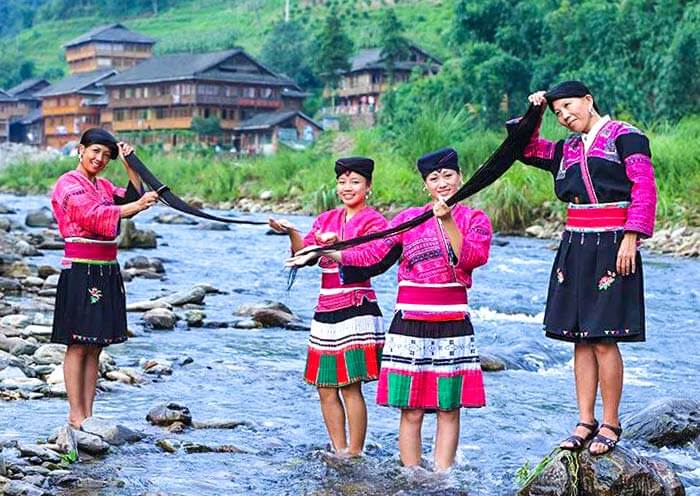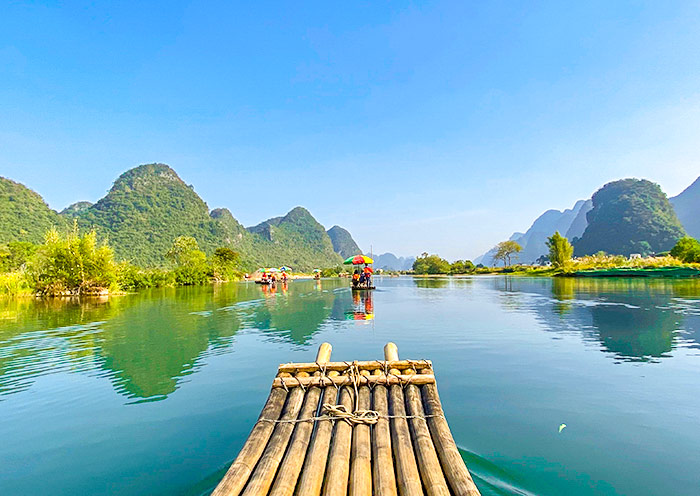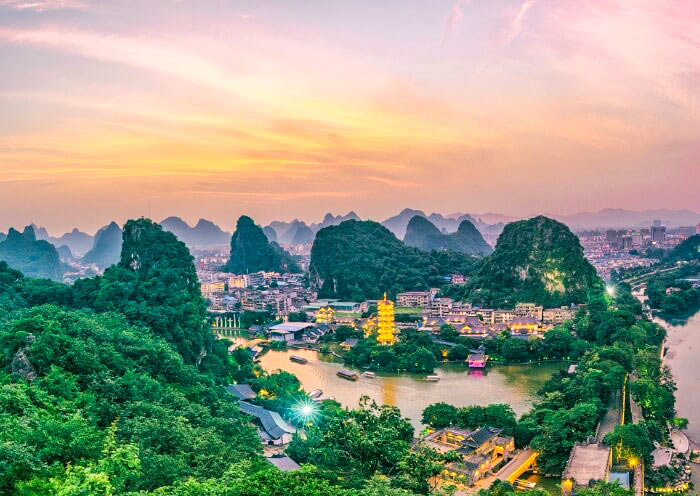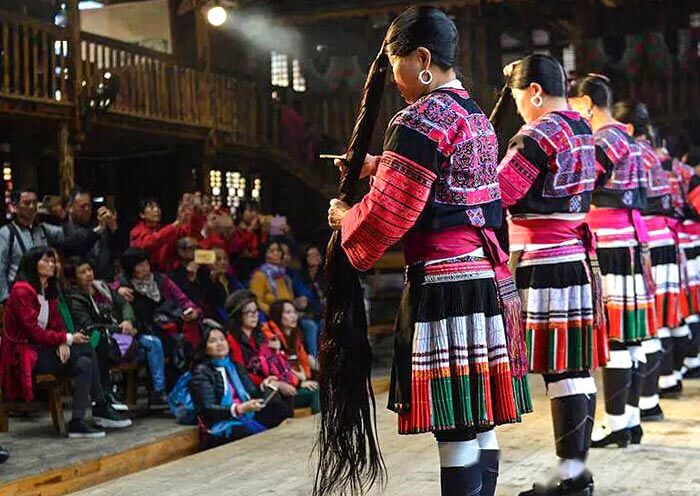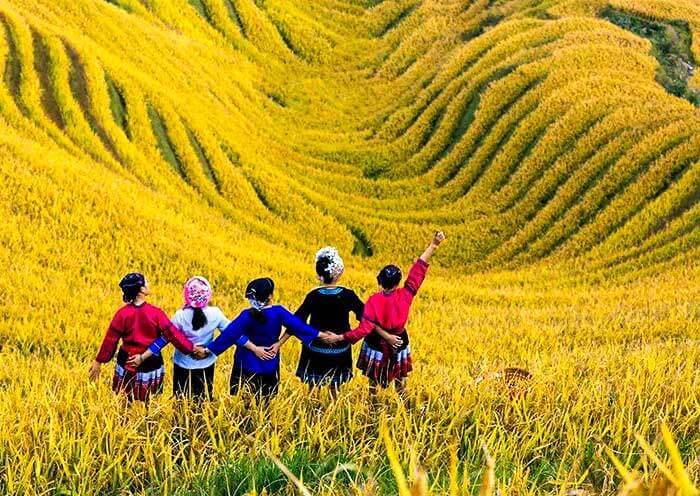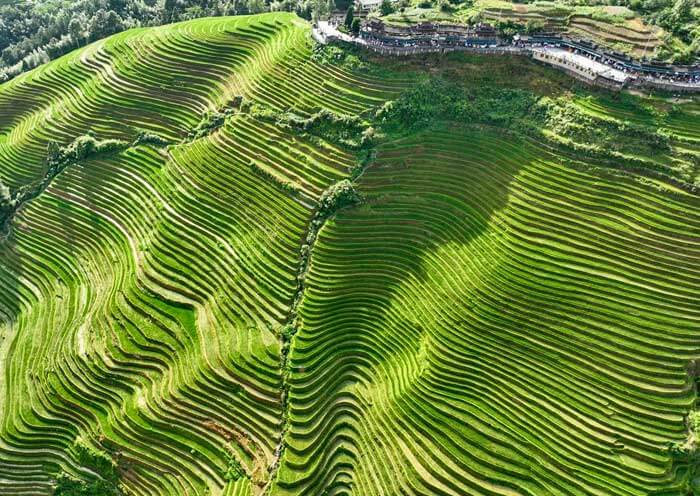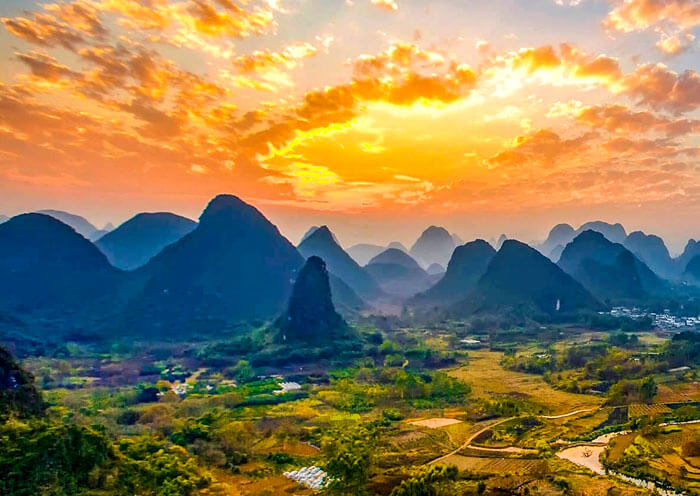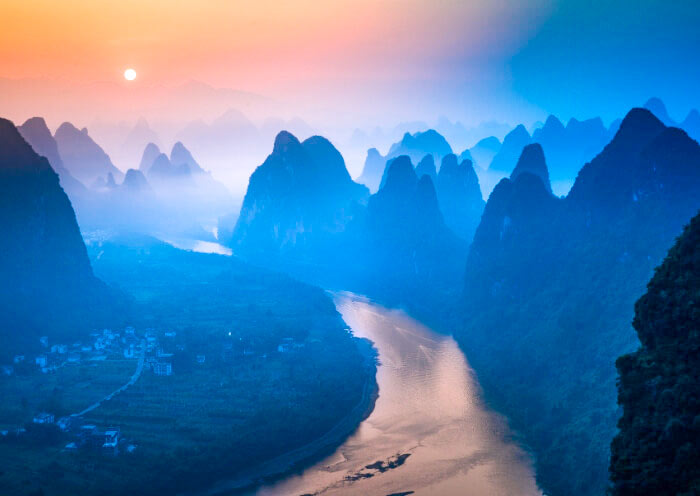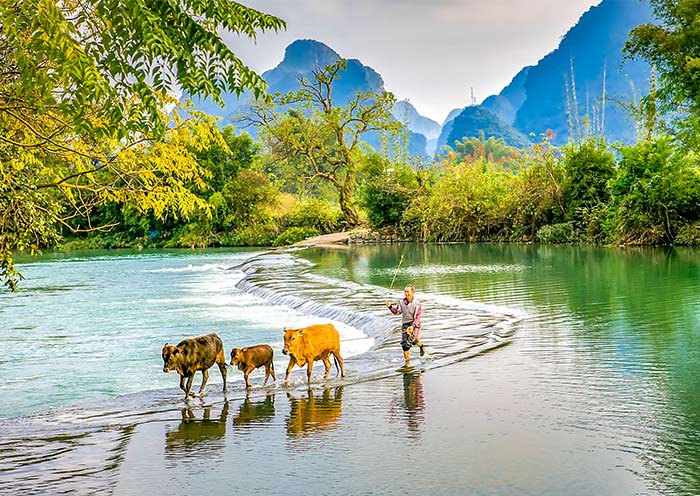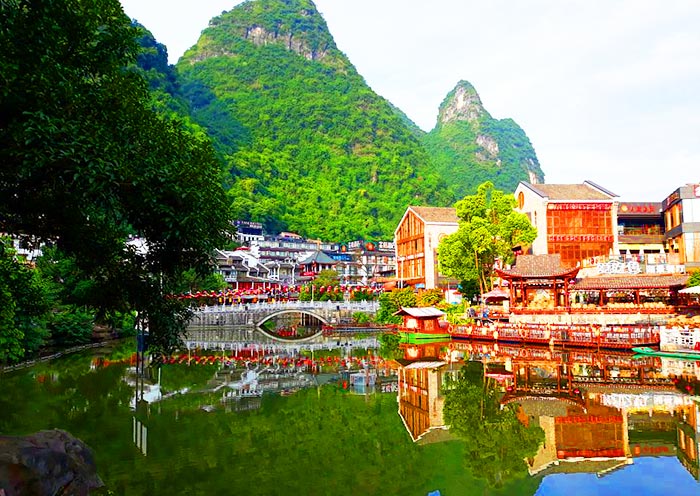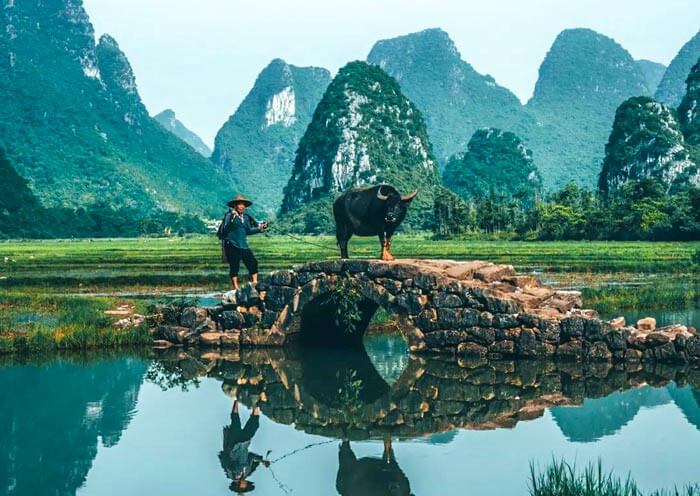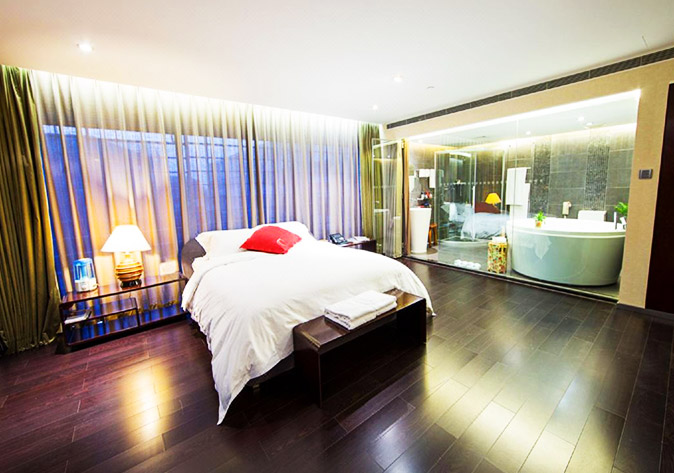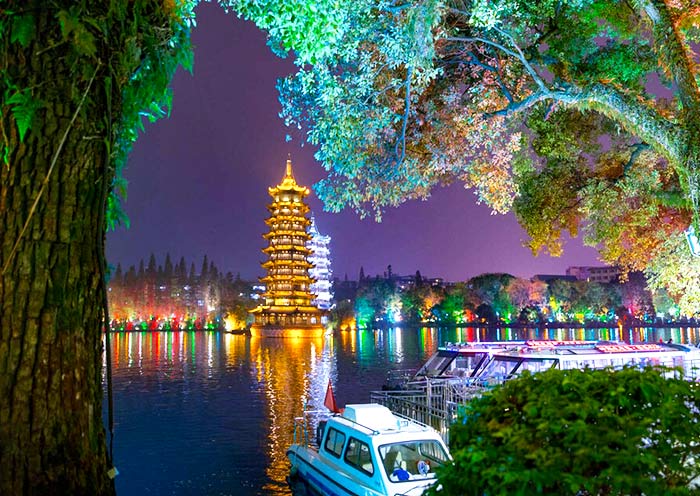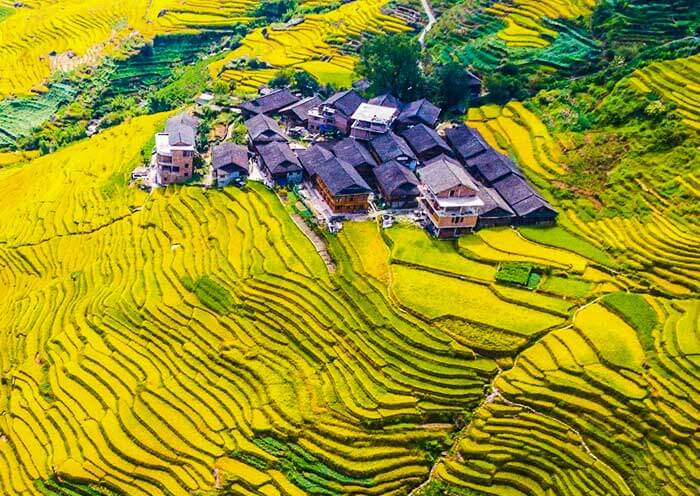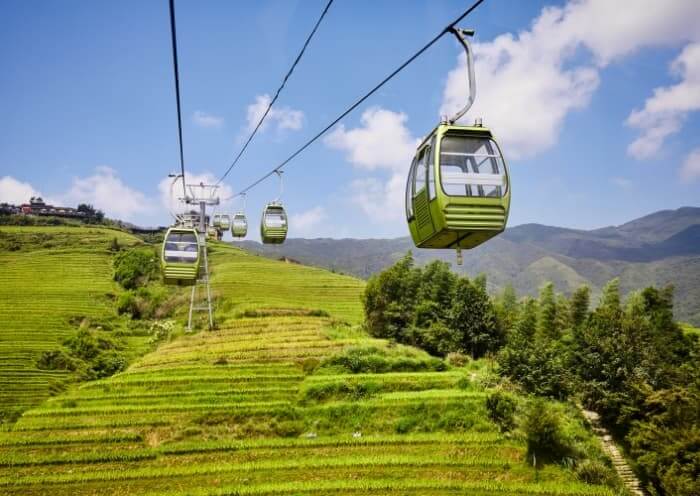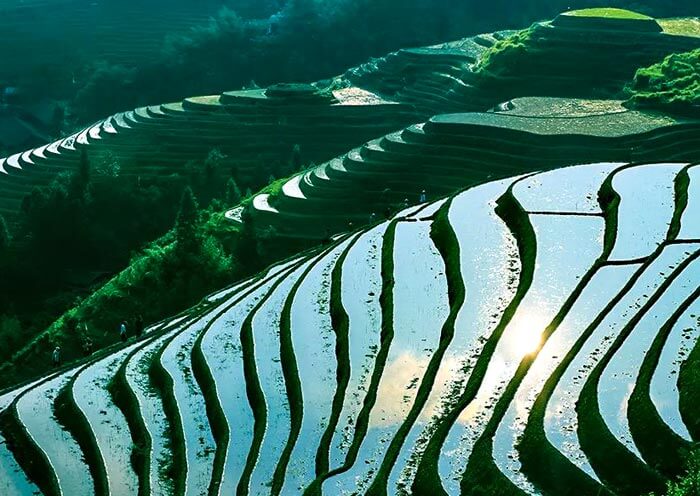1. Huangluo Yao Village & Long Hair Festival
The tradition of Red Yao women keeping long hair here could date back to 1,000 years ago (Song Dynasty, 960-1276). Besides considering long hair as a precious treasure and a symbol of good luck, Yao women also like to wear red clothes, and the Red Yao ethnic group is named after this.
If you happen to visit during the third day of the third month of the Chinese lunar calendar, you can participate in the Long Hair Festival (三月三长发节) and witness the ancient and mysterious Red Yao young women's coming-of-age ceremony (at 17 years old). You will find that unmarried Yao girls cover their long hair with a headscarf and do not easily show it, while married Yao women wear their hair in a bun on top of their heads. The bun is made up of three parts: the hair that falls down from daily grooming (collected and saved over time), the hair that is cut during the coming-of-age ceremony (the only time in their life that they cut their hair), and the long hair that grows on their head (which can hang down to the ground).
2. Why Longji Rice Terrace & Jinkeng Rice Terraced Fields of Dazhai
The Longji Rice Terraces, also known as Guilin Longsheng Longji Rice Terraces Wetland Park. During this trek, you will gain a deeper understanding of the marvel of agricultural art that the Longji Rice Terraces represent, including its sustainable development model known as "Upper forest, Lower field, and Dynamic Balance". Currently, the forest coverage of Dazhai Village is about 82%, which plays a role in conserving water sources while protecting the terraced landscape. This model is acclaimed as a living fossil and an engineering exemplar of soil and water conservation systems. You will see that terracing the fields like this not only reduces the chances of erosion but also helps to retain water as rice requires a lot of water to grow.
In fact, Longji Rice Terrace is a group of rice terraces, there are mainly four parts include Ping'an Rice Terraced Fields, Jinkeng Rice Terraced Fields, Longji Ancient Zhuang Village Rice Terraced Fields, and Xiaozhai Rice Terraced Fields. Among them, Jinkeng Rice Terraces are must-visit terraced fields known for their stunning landscapes and convenient transportation. Located in Dazhai Village, Jinkeng Rice Terraces Fields are the largest of the four terraces fields of Longji and the only terraced facility with cable car. Jingken Rice Terraced Fields are the first choice for photographers.
3. Dazhai Village & Clothes Drying Festival
If you come to Dazhai Village during the Clothes Drying Festival (the sixth day of the sixth lunar month,六月六), you will have the opportunity to admire the long-haired Yao women hanging their traditional hand-made red clothes on the balconies. It takes 3 years to complete a set of Yao clothes. Yao costumes have been listed as a national-level intangible cultural heritage due to their exquisite embroidery skills and gorgeous embroidery patterns. Yao women do not need to draw sketches but rely on their experience to embroider flowers, trees, birds, and animals, which represent the Yao people's understanding of nature while expressing their yearning for a good harvest, a prosperous population, and a happy life. During the festival, there are Traditional Wedding Ceremonies, Long Hair Performances, Panhu Worship Activities (Panhu is the deified dog & Yao people's benefactor), Glutinous Rice Cake Making, Torch Night Show, and Bonfire Party for you to learn more about Yao ethnic group and their culture.
4. Longji Jinkeng Rice Terraced Fields Hiking Tips:(vice versa)
1).From Dazhai Parking Lot to Golden Buddha Peak (cable car is available, 20min), it takes about 1.5 hour's hike.
2).From Dazhai Parking Lot to West Hill Music, it takes about 2 hour's hike.
3).Hiking difficulty: It is moderate and with cable car to save energy. Avoid hiking on rainy days as the paths will be muddy.
5).Late May and late September are the most popular times to go hiking and take photos.
5.Longji Rice Terraces Photograph Tips:
1). From mid-April to early June, during the irrigation period, the mirror-like terraced fields shimmer with reflections of mountains and clouds. It is a perfect time for capturing breathtaking sunrises and sunsets. The area is also known for its enchanting misty landscapes resembling a fairyland.
2).In May and June, during the rice planting season, you can experience the joy of rice transplanting and witness the ancestral farming labor. If you're lucky, you may encounter the Shuyang Festival, where you can immerse yourself in the customs of ethnic minorities.
3).From July to early September, during the lush green period, the rice fields are filled with vibrant green colors, as if stepping into a world of oil paintings.
4).From mid-September to mid-October, during the golden harvest period, the rice fields turn golden, and the waves of rice create a sense of joyous abundance.
5).From November to March, during the field maintenance period, if it snows in January, you can witness the terraced fields covered in a silver-white blanket, symbolizing the anticipation of a bountiful year.
6).From March to April, during the rapeseed flower season, some specific areas of the terraced fields are planted with rapeseed flowers. People wearing traditional ethnic costumes can be seen welcoming spring in the flower fields.




